It started when he first saw STAR WARS and dreamed of things bigger than the theater he was sitting in. Shortly after that he persuaded his parents to buy him a Super 8 camera. Queue the montage of family gatherings shot through a shaky lens and silly short films, then fast forward to the present where Christopher R. Witherspoon sits at the office of Big Screen Ventures in Portland, OR, thinking about how he is going to get his film RAGE out to the masses. Remember this film, Bastards. Remember his name. This is the best film you didn’t see last year, but hopefully, it’s one of the best you see this year.

What was the first film that changed your life?
I saw tons of films growing up, but the film that made me want to make movies more than any other was Star Wars. As soon as I saw it I knew making movies is what I wanted to do. Star Wars opened up my mind to what a film could accomplish with its affect on people.
Tell us about your appreciation for film growing up.
I LOVE movies and always have. My mother was the person who really introduced me to movies; she would take me to the drive-ins back when there was such a thing. We watched all kinds of flicks, every genre, Sci-Fi, Horror, Dramas, Blaxploitation, Westerns, and Foreign. You name it, we watched it. I remember seeing “2001 A Space Odyssey” for the first time and didn’t understand a bit of it and to be honest, I still don’t entirely understand it today. I just knew it was a unique piece of cinema.

Who are the directors out there you dig?
If we’re talking current filmmakers, I’d say I’m a fan of Casper Noe (Director of the films “Irreversible” and “Enter the Void”), he’s an amazing director. Another is Quentin Tarantino of course, although he hasn’t done anything I have really liked since the Kill Bill films. He’s still one of the best. But for me, hands down, the best fucking filmmakers out there are Joel and Ethan Cohen. With their story telling abilities and visual styling and interpretations, I wish they would make an outright horror film. It would be an insane flick.
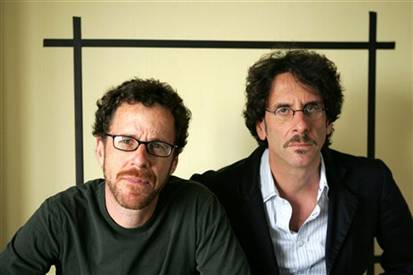
When did you first start experimenting with the camera?
I got my first camera from my mother when I was around 11 or 12. It was a Bolex 280 Macrozoom Super 8 Film Movie Camera. I went nuts filming everything I could. Family gatherings, people cutting their lawns, my mother washing dishes and of course little horror and sci-fi flicks.
What kind of things were you shooting with friends?
We made all kinds of films, predominantly monster films which were all pretty bad. The effects were bad, the acting bad and terrible production value. I was just a kid with a bunch of other kids learning as we went along doing this trial and error method of filmmaking.
You have been in the industry for a while doing PA assignments, practical effects, and more. Talk to us a little about finally making the jump and directing your first film.
I just got tired of working on other peoples projects and wanted to make something of my own. Dare I say the first “kind of” professional effort was a short television pilot entitled “Hubble”. It was a children’s show that actually got picked up by the Learning Channel but due to budgeting issues the show got axed even before we shot one episode. Several years after that, I shot my first feature “Middle Man”. It was a drama and it was an okay little film considering the budget was literally pocket change. Everyday my friends and I would see how much money we had in our pockets and figure out what we could afford to do that day. Next came RAGE. I’m sure that there are other filmmakers who will read this interview and understand exactly what I’m talking about when I say that filmmaking is an addiction. What happens is a period of time will pass since your last project and you start to “Jonesing”. You just get this desire, a NEED to express yourself or an idea that you have and NOTHING can stop you from pursuing it.
Were you kicking around other ideas for stories before you settled on RAGE?
Yes I have all kinds of story ideas and several scripts that I have already written. The project that I really wanted to make before RAGE was called “Head of the Tale”. It was a horror anthology that has four short stories with a connecting element. I soon realized that it was going to cost too much money to produce, somewhere between 2.5 and 5 million. I knew I didn’t have access to that kind of cash. So I made RAGE. Thankfully RAGE has been generating a lot of interest, so much that I think I’m going to be able to get the funding to make “Head of the Tale”. By the way, the film has undergone a title change and is now entitled “The Twilight Hotel”.
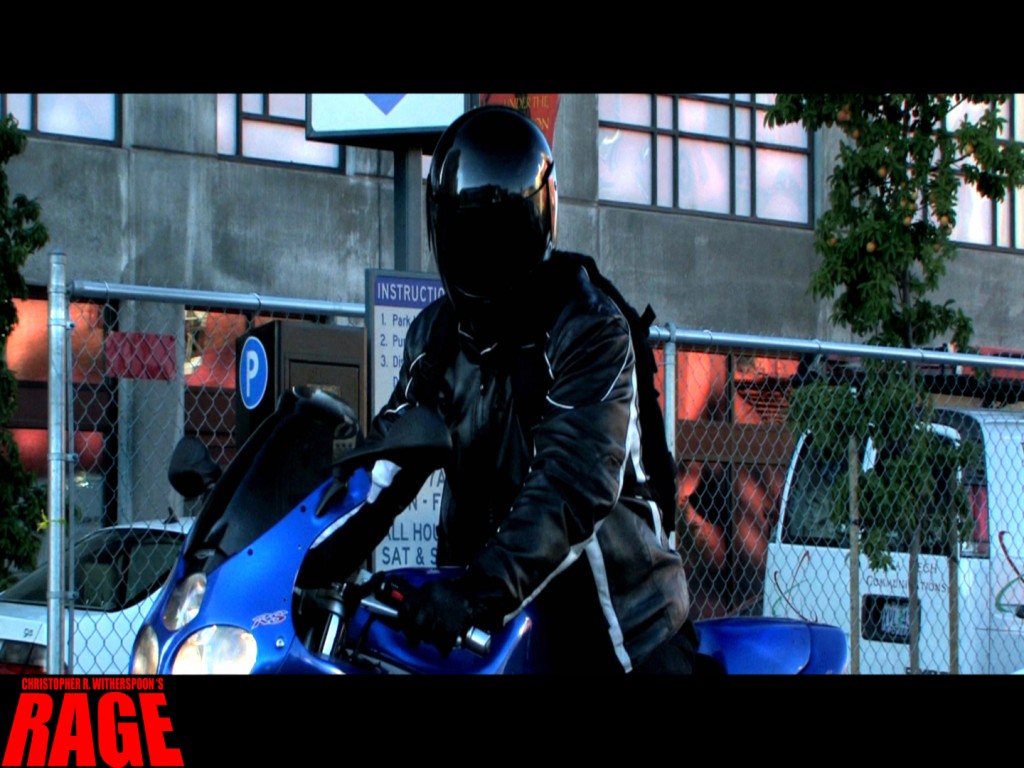
Walk us through the creation of RAGE and how you developed that story.
Well the idea is a combination of films that I have been inspired by over the years and things that were taking place in my personal life at that time. For two years my children’s mother and I had been going through a horrible custody battle and anyone that’s ever had do this will tell you it’s a very, very traumatic process. It was during this time that the idea for Rage started to form. 6 months earlier I happened to catch Steven Spielberg’s classic film “Duel” on television. I remember thinking as I watched it that it was just as good as the first time that I saw it… (I guess that’s why it’s a classic… duh).
Anyway, the reasons my ex and I ended up in court was that I was having several affairs and she found out. My actions pretty much ended our relationship, damage, and forever change the lives of our 3 children who were entirely innocent… some might call it collateral damage. As a filmmaker the only way for me to deal with what was happening was to write about it and that was the beginning of Rage. For me to get interested in a project I have to find some way to connect with it on a personal level so I got to thinking about how the decisions that I made caused so much destruction to not only my life and those closes to me, most regrettably my children. My personal, completely self-inflicted, tragedy would serve as the subtext to Rage and much of the surface story I would steal from the likes of Hitchcock, Spielberg, Carpenter, Craven and of course no theft of great filmmakers wouldn’t be complete without stealing from Kubrick. I know it sounds strange to admit to stealing but these amazing directors have been, and continue to be, my mentors. I learned about film from watching/studying their movies and reading about them so I’m not actually admitting to outright theft but I was surely inspired by all of them just as they were inspired by the great directors who came before them. To be totally honest, no film is completely original… especially those currently made by Hollywood.
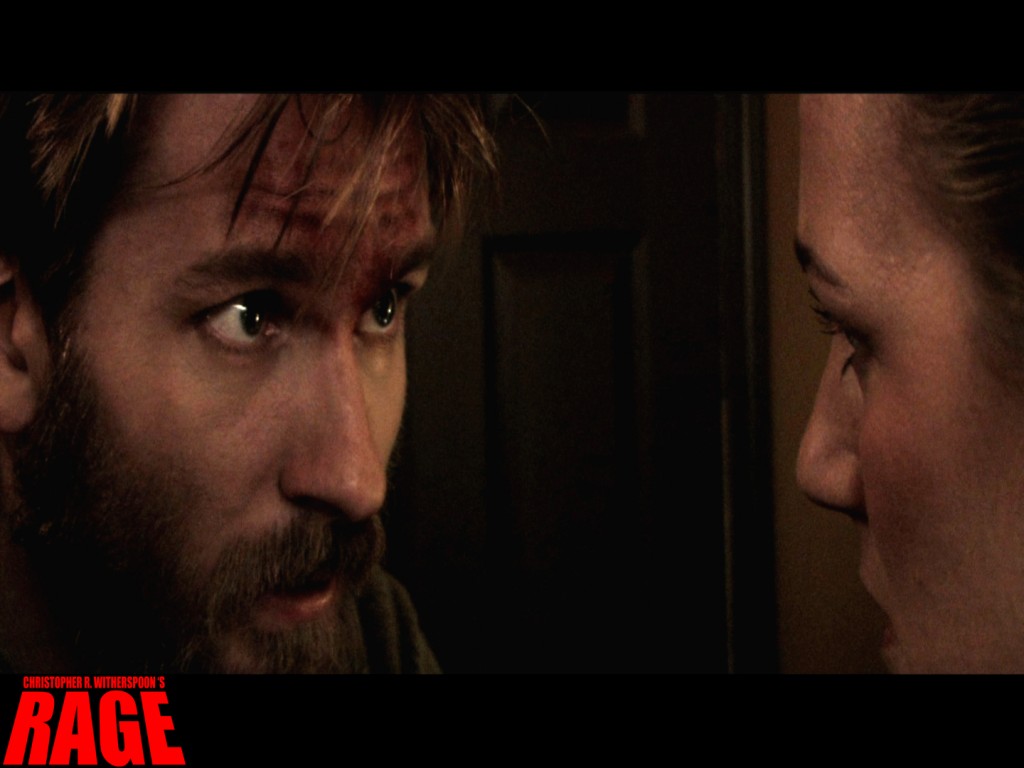
How difficult was it to work with a small budget on an ambitious film like this? Did it force a level of creativity?
Working from a very, very limited budget standpoint I understood that whatever film I selected to produce was going to have to meet a certain criteria: 1. It must have a limited cast. 2.The story itself would have to take place over the duration of just one day. 3. The locations were going to have to be kept to a minimum. Although these things were very important, they were not the determining factors but they were some of the most important when budgeting. For instance, a bigger cast would mean more people to pay and more mouths to feed. Having the story itself take place over something like a 12 or 24 hour period saves money on things like wardrobe. Continuity is much easier and keeping the production limited to only a few locations is a big money and time saver. A couple of films that did all this successfully were “The Cube” and the first “Saw” film. Out of these rules the one I did not totally agree with was the “Limited Locations” rule.
Working with a limited budget is a very hard thing to do. A film’s budget, to a large degree, dictates what you will and will not be able to do story wise. In many ways, especially in regards to indie films, it is better to know what your budget is even before you write your screenplay. That way, you won’t go crazy writing scenes that you will never shoot. It is better to have to make sacrifices in the writing stages. Having said that, indie filmmakers with lofty dreams must be resourceful. Everyone knows the saying “Necessity is the mother of invention.” Well I liked to believe that “Desperation (lack of money) is the mother of creativity.” Indie filmmakers have to be realist about what they can achieve with the money that they have but at the same time, they must push to be as creative as possible… And remember that having tons of money doesn’t always equal a successful film.
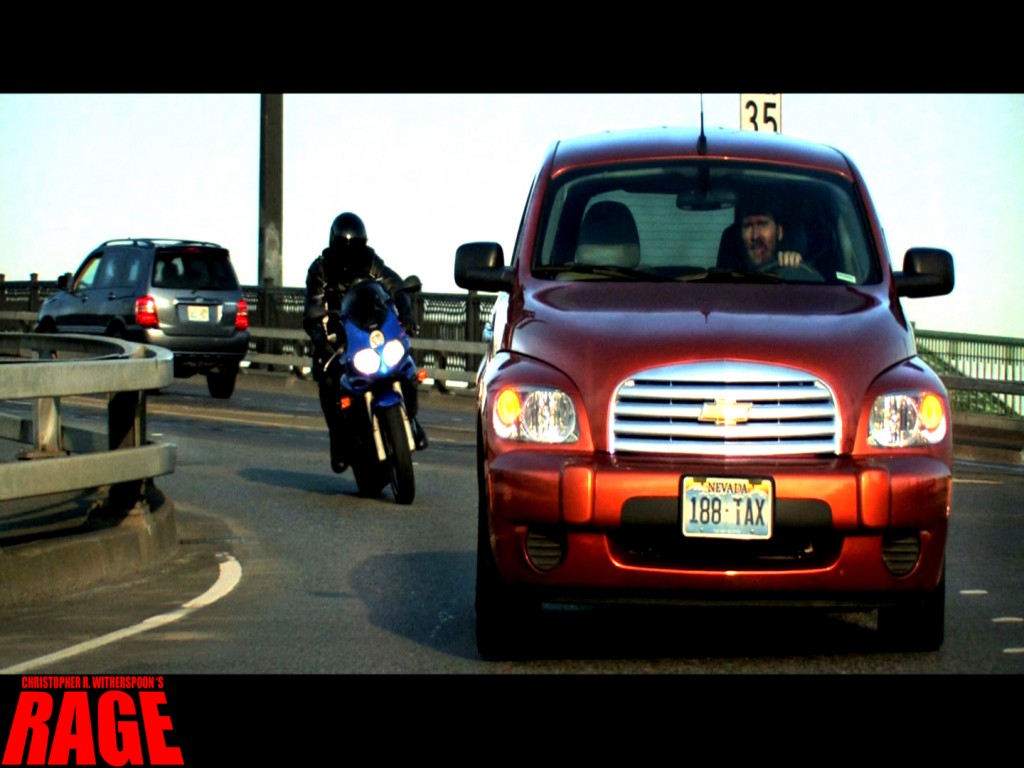
What kind of difficulties did you come across making the film?
To be honest the production was pretty smooth through the pre-production phase on through the post-production phase. So far, for me at least, raising the paper, greenbacks, molar, scratch, the mean green, cabbage, loot, dough, bread, clams, dead presidents…you know what I’m talking about…THE MONEY. The money to produce a project it seems is always the hardest part and I think most filmmakers will agree with that.
Obviously DUEL is a huge influence on the film but the characters interact more with each other than that film. Talk to us a little about using an homage to a classic and then making that idea your own.
Yes, Duel was a major influence in many ways. For example, the relationship between Dennis Weaver’s character (David Mann) and the Diesel truck in Spielberg’s Duel is similar to the relationship between the Rick Crawford character (Dennis Twist) and the Biker character from RAGE because they are both anchored by the “Fear of the violent unknown”. Even though both films have a common theme, the interaction between these characters in their respective films is a bit different. In Duel, the truck is such an imposing presence by virtue of its physical size alone. Its monstrous sounding engine and blaring horn. In RAGE, it is a more up close and personal relationship, one that you can’t easily hide from. In Duel, the Dennis Weaver character could just get off the road, but in RAGE you truly don’t have a place of safe refuge. By structuring the relationship in RAGE this way allowed me to capture the essence of the “Fear of the violent unknown” as in Duel, but it brings a little something extra helping to make it feel different.
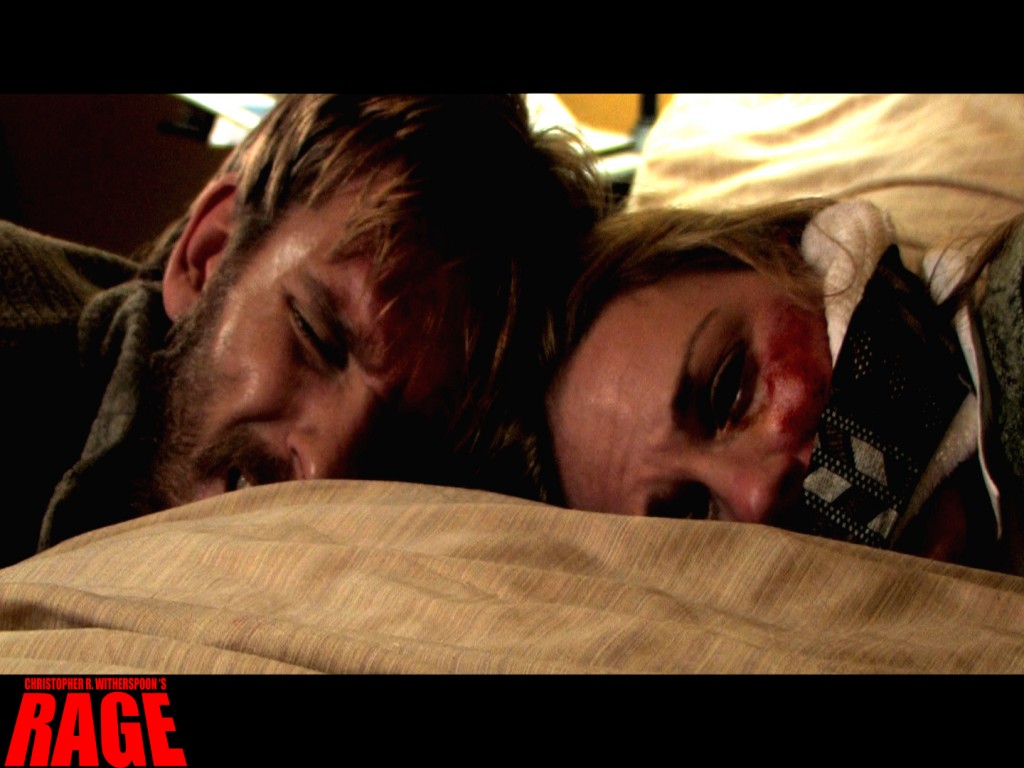
This flick is packed full of scenes that are going to get audiences buzzing, do you have a favorite?
Yes, I do, scene #28 which is a rape scene, and not because I am some closet perverted psycho who gets his kicks from this kind of scene. It’s because the scene is complex, very dramatic and powerful. It’s the kind of scene I think every director would love to direct. Without giving away too much, the scene involves a rape. An appalling act, but there are things that take place in the scene that I think are arguably worse than the rape itself. Now I know there are people who might say “What is worse than being raped?” Well, you will have to see the scene and afterwards you might just agree with me. Shooting scene #28 was a great challenge and proved to be very difficult. Audrey Walker, who plays Crystal Twist, the wife of the films lead did a fantastic job. In the scene her character has been gagged and bound by her wrists and ankles while Dennis, also tied up, is forced to sit in the corner of the room and watch. The scene was emotionally complicated and physically exhausting to do. I was wearing my helmet throughout the entire scene and several times during the filming I hyperventilated and nearly passed out.
The reaction to the scene by festival audiences both in America and abroad has been interesting. Some have found the scene to be a bit too much. I agree that it is a very hard scene to watch, but personally I believe that there are other films that depict scenes of rape that are visually much more explicit than RAGE, like Gasper Noe’s film “Irreversible” and the recent remakes of “I Spit On Your Grave” and “Last House On The Left. I attribute the controversial aspects of the rape scene in RAGE to the “Psycho Effect” (in reference to Alfred Hitchcock’s 1960’s classic “Psycho”). In the film Janet Leigh’s character is attacked and murdered in a shower. It is one of the most well-known scenes in cinema history. Many audiences at that time were overwhelmed and when later asked what bothered them so much about the scene many said it was too graphic or even offensive. When they were pressed on what they saw, in just about every case their visual recollection didn’t match what actually appeared on screen. This contradiction between what the audience thought they saw and what was actually on the screen was attributed to a film technique, which Hitchcock described as “Transferring the menace from the screen into the minds of the audience”. He hid the violence of the scene inside a montage where you never actually see the knife touch Janet Leigh. The impression of violence is done with quick editing, and the killing takes place inside the viewer’s head rather than the screen.
In RAGE it appears that scene #28 is having this “Transference/Psycho effect” with its audience. I am very happy with the effectiveness of the scene, which has driven more than a few of its viewers from the theater to the safety of its lobbies. After speaking to many of these “Walk-outs”, I found their responses eerily similar to those of the audiences of Psycho some fifty years earlier. This isn’t surprising considering I closely studied the Psycho shower scene when I designed the rape scene for RAGE.
Give us your elevator pitch for RAGE that you are using for distributors?
Okay, how’s this…Hello Mr. Acquisition Person, let me tell you about my film RAGE. It is an indie-horror-suspense-thriller, inspired by such film classics as Spielberg’s “Duel” and Carpenter’s “Halloween”. It is a “Real Independent” film produced in the spirit of true “Guerrilla Filmmaking” like Rodriguez’s “El Mariachi” and those films of the great John Cassavete’s. RAGE is a story of a man who unintentionally provokes the wrath of a mysterious, homicidal motorcyclist and must fight for his very life. RAGE has had great exposure, screening at festivals all over the world, winning multiple awards, many for best feature. In addition, RAGE has received fantastic press from around the world as well. In fact, not to be disrespectful, better press than many of the films that you currently distribute. I really think you should take a look at RAGE.
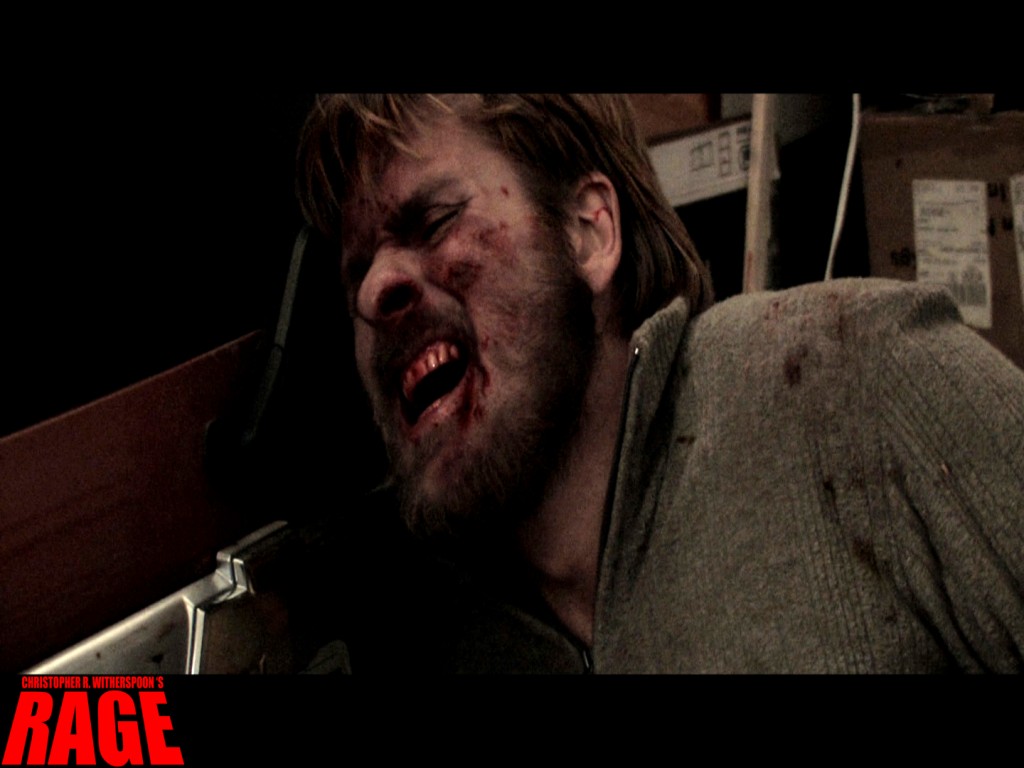
How are you marketing the film?
Currently we are marketing the film to potential distributors. For the past year or so, we’ve received distribution offers from different distributors and we have passed on all of them. We appreciated those offers, but the reality is those companies were smaller distributors who did not have that much of a distribution-reach. Instead we chose to let RAGE go through the 2011 festival season hoping to win some awards and we did. 15 in total, including 5 for best feature. Also, we hoped to get some favorable press and we have, some “Very Favorable Press”. This whole plan is what we call “Building A Pedigree” in the hope that the major distributors…the Lionsgates, the Magnets, and the Magnolias of the business might see the potential of RAGE.
Tell us what’s next for RAGE.
We are currently putting together a presentation package that features the accomplishments/pedigree for RAGE for those distributors mentioned above. Many of whom have already expressed interest. After that we’ll just have to see what happens.
How about you as a filmmaker, what kind of projects are you kicking around?
All kinds of stuff. I’ve already told you about “The Twilight Hotel”, but a few other things that we have on the table are a Sci-Fi/Horror idea that doesn’t have a title yet. It’s a zombie flick and I know everyone and their mother has a zombie idea, but I guarantee this idea will be more unique then any of them. The film will reinvent the zombie genre in the same way Joel Schumacher’s “The Lost Boys” reinvented the vampire genre. That’s all I’m going to say on that one. There is another yet to be titled idea, it’s a horror/dark fantasy about a regular, everyman who accidentally gets caught in an alternate reality that he tries to escape from. It’s part “Alice in Wonderland” and “The Wizard of Oz” with a touch of “Aliens” and a dash of “Hellraiser”. One helluva recipe.
SPECIAL FEATURES:
Follow RAGE on Twitter HERE
Follow Chris on Facebook HERE
SEE YOU ON FORTY DEUCE,
G
- [THE BIG QUESTION] WHAT’S YOUR FAVORITE FEMALE ENSEMBLE IN MOVIES? - July 22, 2016
- [IN THEATERS NOW] THE BOY (2016) - January 24, 2016
- Cult Movie Mania Releases Lucio Fulci Limited Edition VHS Sets - January 5, 2016






No Comments